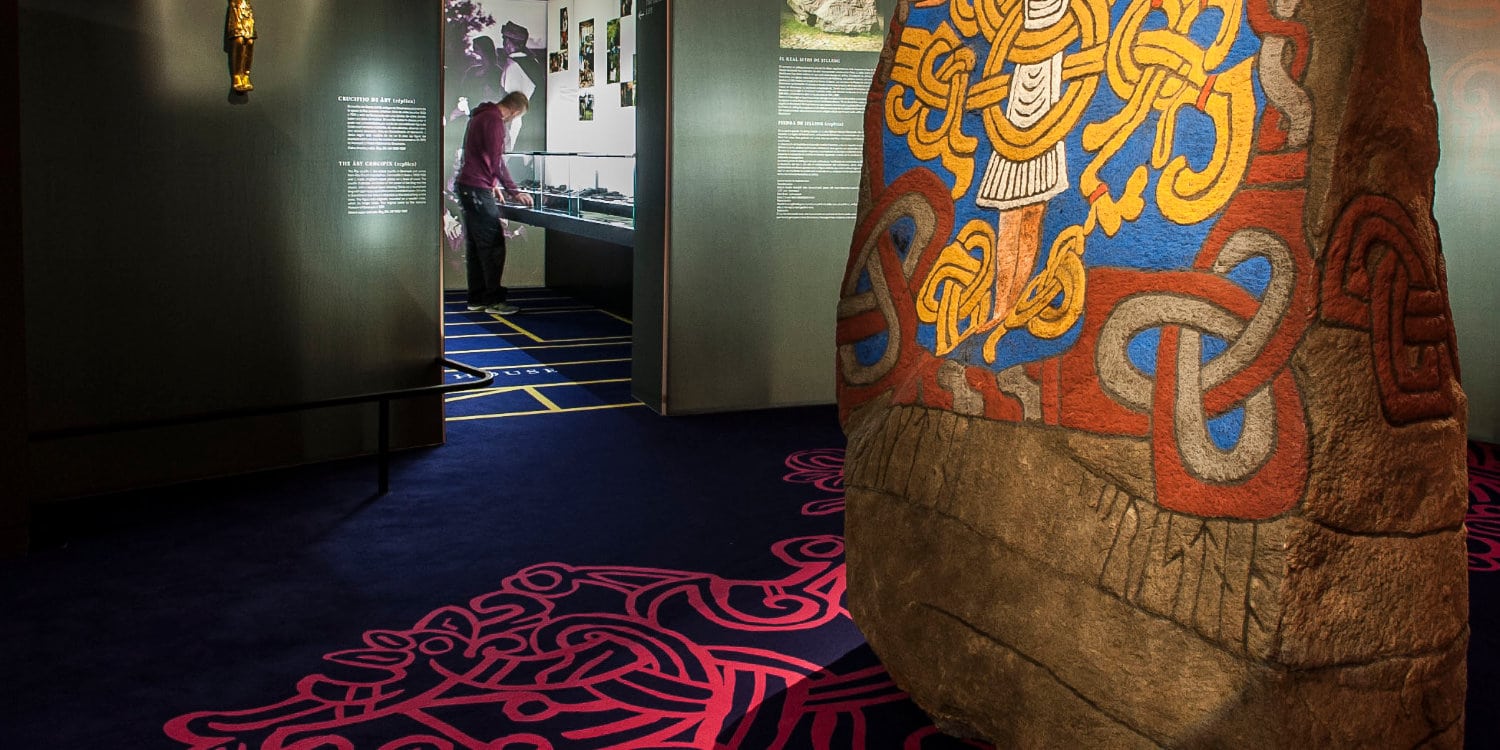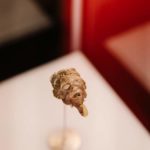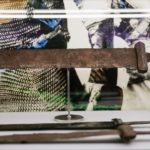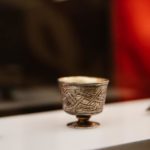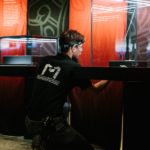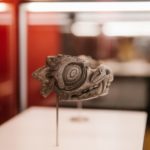In collaboration with the National Museum of Denmark MuseumsPartner produces and manages several turnkey touring exhibitions about the Vikings. These exhibitions present the Vikings in a modern way, telling the true story about this riveting time in history. On December 12, 2020 a new version of the traveling exhibition Vikings: Warriors of the North, Giants of the Sea was launched at the Western Australian Maritime Museum, Fremantle, Perth, Australia before going on a global tour. This smaller exhibition designed for museums with limited space, showcases more than 140 spectacular finds and treasure objects from the Viking Age. For the exhibition installation, two art technicians from Austria and couriers from Denmark had to travel to the US and Australia, when international travel was still banned. The highly valuable artefacts and the exhibition architecture were moved from the United States and Europe to Fremantle, Perth. The changing travelling and import regulations made the journey of the objects, couriers, and art technicians a unique and partly surreal experience.
First questions arose: Who was willing to travel to the US during the pandemic? What were the travel restrictions for the specific states in the US?
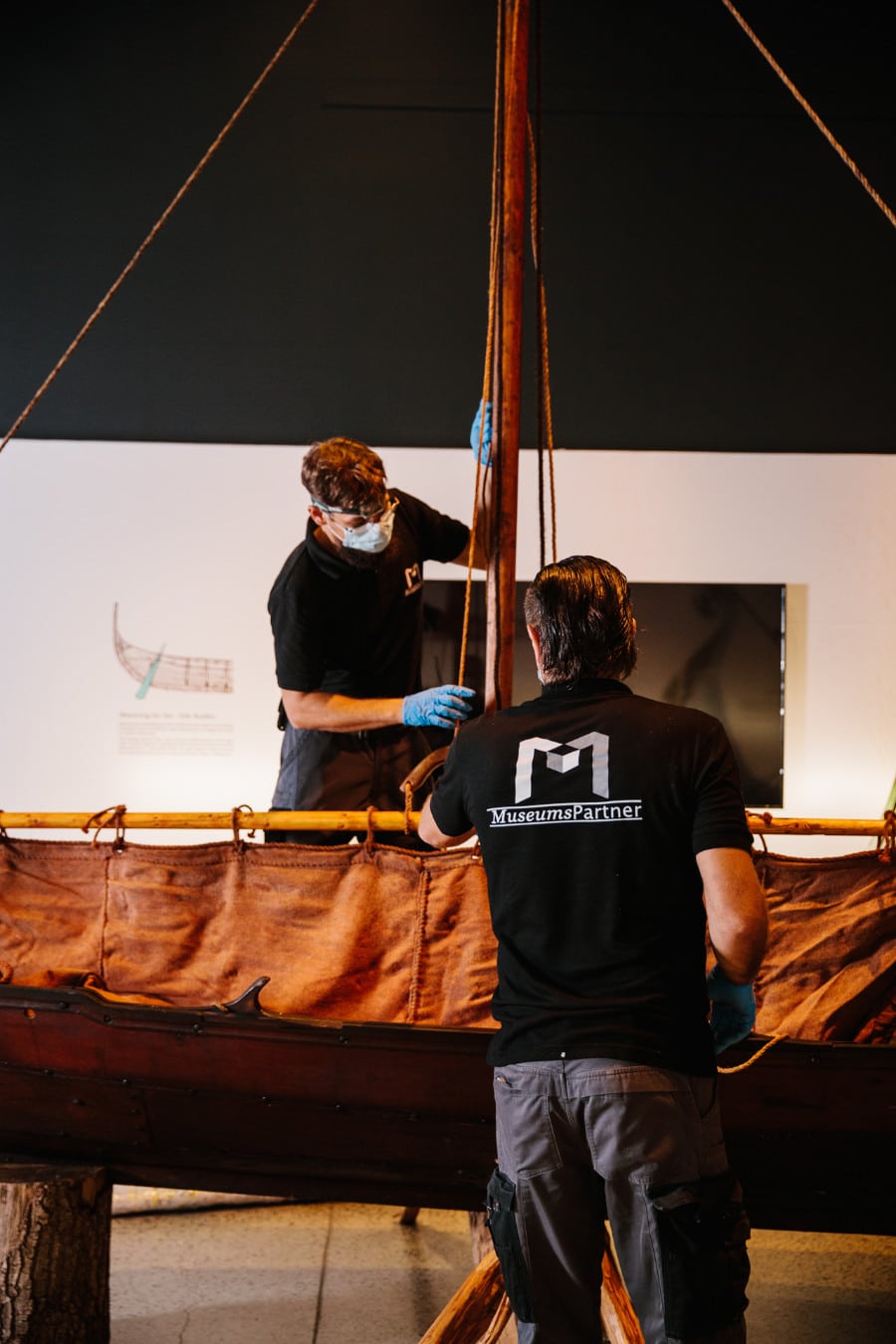
Phase 1: trip to the US with a few small detours
First step was to prepare parts of the US stored exhibition setworks for transport from Kansas City to Australia via Houston. To ensure that everything arrived in perfect condition at the Western Australian Maritime Museum, we wanted to send a MuseumsPartner art handling expert to the US to manage the shipment. First questions arose: Who was willing to travel to the US during the pandemic? What were the travel restrictions for the specific states in the US? Many of our highly skilled art technicians preferred to stay in Austria during this uncertain time, but Hans Geiler, MuseumsPartner art technician, was willing to travel. Usually we have several art technicians on site. As this was not possible in the pandemic context, we planned in some extra time and appointed several local professional art technicians. The main question was still open: How could Hans enter the US? After extensive research about the travelling restrictions, which varied in the US from state to state, and discussions with insurance companies, we found a route via the Dominican Republic to Miami, and from there to Chicago and Kansas City, which was open to entries from the Schengen area at this time, provided that a PCR-test was done. Except from a raging hurricane in the Dominican Republic, everything ran smoothly, and Hans arrived safely.
But Storm Beta thwarted our plans, temporarily paralysing Houston and consequently, our shipment. Our art handling experts were however able to deliver the shipment on time from Kansas City to the port of Houston. First step done: parts of the exhibition architecture had been sent via sea freight from the US to Australia. The remaining displays and all artefacts were sent from different European countries to Australia. At this point, we were expecting the end of the lockdown and a loosening of entry restrictions for Australian territories.
Phase 2: worst-case scenario
The situation in Australia remained unchanged . We were not allowed to travel to Australia, at least not without special permits. Postponing the exhibition opening was out of question. Exhibition schedules of the Western Australian Maritime Museum and of MuseumsPartner were already full. Cancelling the exhibition was also not an option, due to the financial consequences for both parties. We therefore developed some plans for the worst-case scenario. We designed a procedure, with a user-friendly “remote” exhibition installation manual and support documentation, a conference call process, and collaboration with highly skilled local professionals; to make it possible for us to monitor the exhibition installation without physical presence of our art handling experts. This was acceptable for the exhibition displays, but questionable for the artefacts, which needed to be accompanied by couriers from the National Museum of Denmark. No one, except from their expert team members, are allowed to handle the objects. Our plan was literally a worst-case scenario.
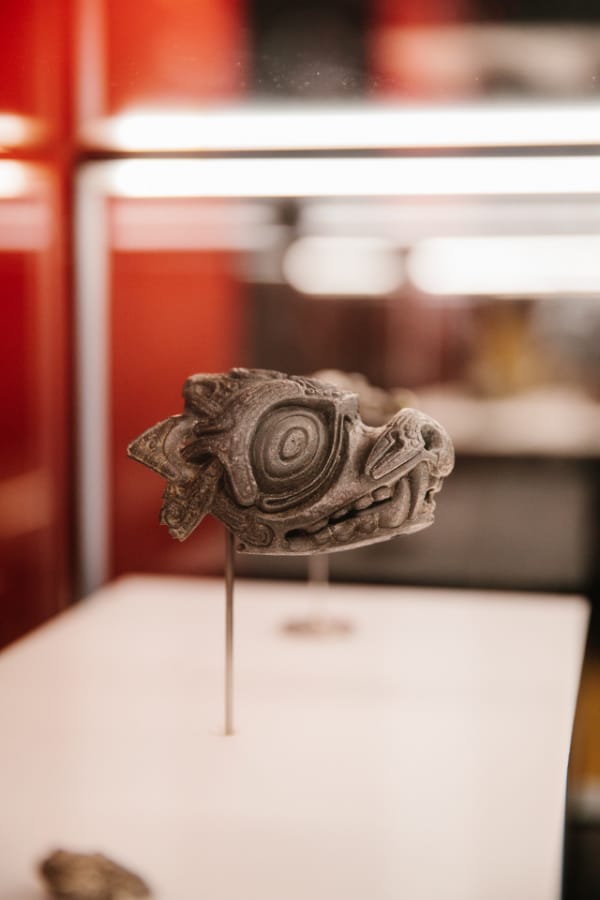
Flight rates rose astronomically during the pandemic [...] and flights are getting cancelled more often than before COVID-19.
Phase 3: The Special Entry Permission Challenge
We set everything in motion to get the special entry permission and visa for our art technicians and the couriers of the National Museum of Denmark. We had to travel to Australia the beginning of November at the latest to have enough time for installation, including for two weeks of quarantine when arriving. Mid-September we received only one permit, instead of six. We persistently contacted the embassy. With their help and support from the Western Australian Maritime Museum we received all remaining entry permissions within three days, which ultimately gave us the OK to book the flights. However, the booking was more complex than the usual one-minute job. For example, the quarantine regulations in Australia varied from one state to the other. Consequently, the required quarantine time could easily reach four weeks or more for our team. As the two week quarantine was acceptable for us, we looked for direct connections from Qatar or Singapore to Perth. Also, flight rates rose astronomically during the pandemic and for this trip, we found a flight priced at € 4,500 per person. Additionally, flights are getting cancelled more often than before COVID-19. Therefore, we were making sure to plan in some extra time to avoid delays because of flight cancellations.
Phase 4: exciting welcome in Australia
And that’s when our considerations became reality. Robert, the MuseumsPartner Art handling expert, was on his way to the airport in Zurich. He checked-in and just as he entered the plane, he had to leave. His flight had been cancelled at the last minute. We had to go one step back in our planning procedure. We booked another flight from Munich for the next day, and we were successful. Robert safely arrived in Perth. From this point, the journey started to get more interesting, partly bizarre, as MuseumsPartner art handling expert Robert Hilbrand explained: “After three hours of waiting at the airport, we could finally go to the hotel – in a bus, with police escort. I felt like in a Hollywood Action movie. Four busses, each one driving between police cars with flashing blue lights, heading towards the Fremantle city centre. During this spectacular ride, a police officer informed us that the following items will be taken from us as soon as we arrived at the hotel: alcohol, tobacco, lighters and all sharp objects. It was a surreal experience.”
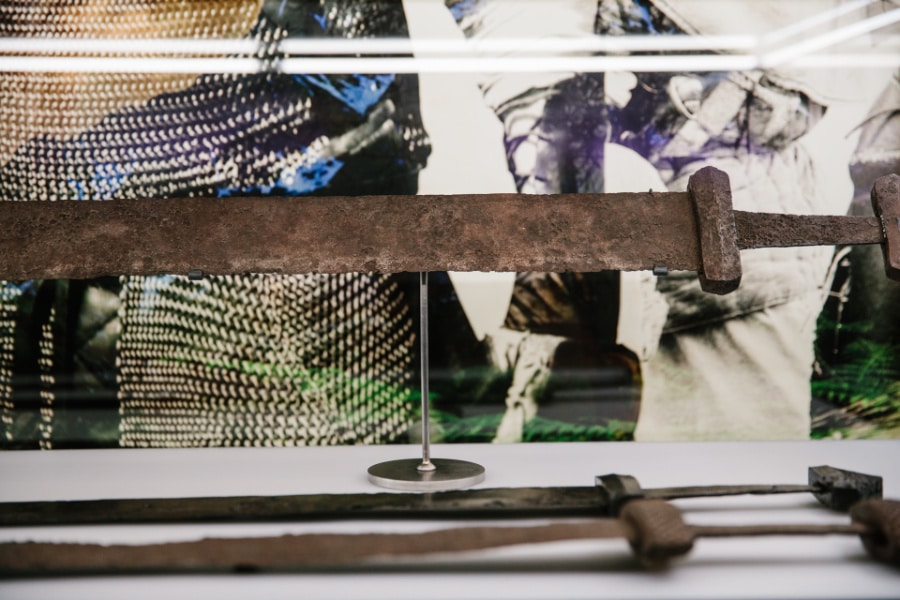
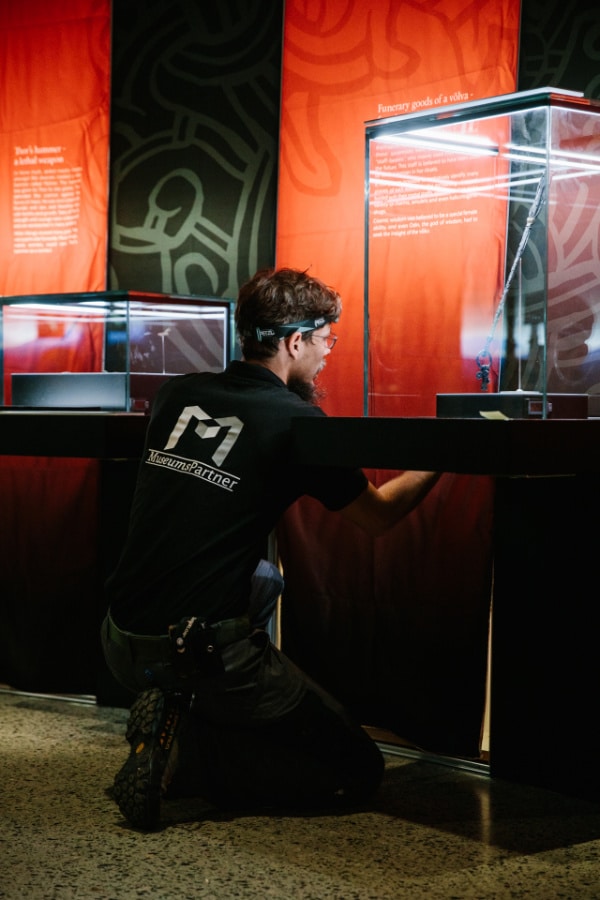
Phase 5: Relief
After two weeks of isolation in a hotel room, our art technicians and the couriers from the National Museum of Denmark were allowed to meet with each other and begin the installation of the exhibition. The work was, as one can imagine, double fun after quarantine. A well-designed cooperation, where we implemented social distancing between the teams, enabled a smooth exhibition installation. On the way back to Europe, our experts enjoyed the unusual tranquility at the airport and the returning flight in a Triple Seven with more crew than passengers, where they were upgraded to business class. And that´s how this voyage ended with a pleasant surprise.
Like many teams who tour international exhibitions in these unprecedented times, we had to continuously adapt throughout the development of this project. The possibility to develop collaborations despite the odds, the successful exhibition openings, and the new skills we develop in finding new ways to make travelling exhibitions come to life around the world continue to make our work so unique and meaningful.
The exhibition opening took place as planned on 12 December 2020, and visitors were allowed to attend. The exhibition is still open to the public and will run to 16 May 2021. The museum has a Covid Safety Plan and follows all government advice.
Description of the exhibition
This turnkey touring exhibition, produced by MuseumsPartner in collaboration with the National Museum of Denmark, includes over 140 artefacts dated between 750 and 1100 AD. All objects are drawn from the significant collection of the National Museum of Denmark.
For more details: Either https://www.museumspartner.com/en/wanderausstellungen/vikings/
Or contact MuseumsPartner via their profile on Teo.
About the authors & contributors
Jessica Elsaesser, Digital Media Management, MuseumsPartner. Jessica has been part of the MuseumsPartner team since 2013. She started working for MuseumsPartner whilst finishing her studies in Strategic Management and Economics.


